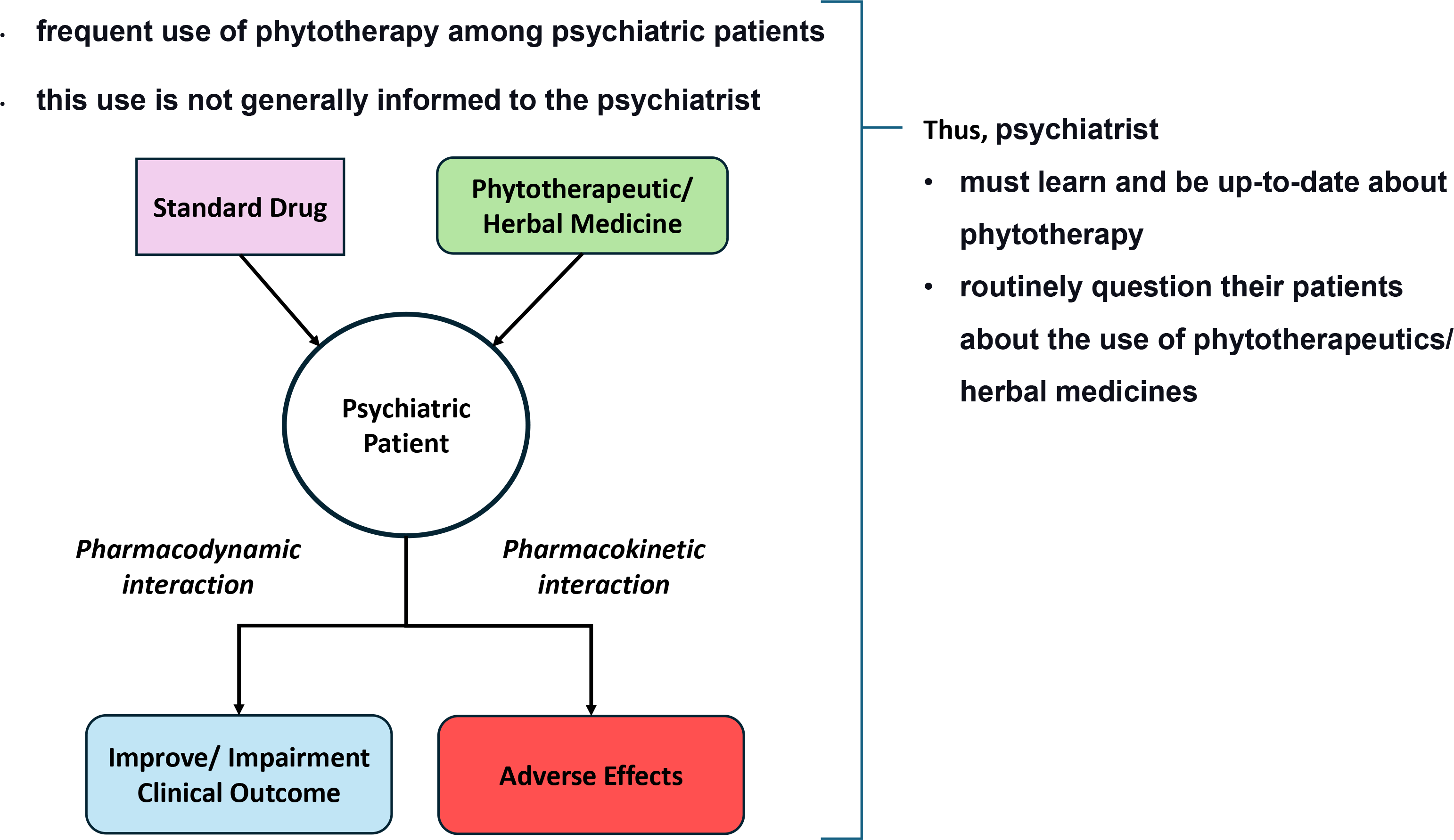No CrossRef data available.
Published online by Cambridge University Press: 02 October 2024

There is a substantial use of Complementary and Alternative Medicine (CAM) among both the general population and psychiatric patients, with only a minority of these users disclosing this information to their healthcare providers, including physicians and psychiatrists. This widespread use of CAM can impact positively or negatively on the clinical outcomes of psychiatric patients, and it is often done along with conventional medicines. Among CAM, phytotherapy has a major clinical relevance due to the introduction of potential adverse effects and drug interactions. Thus, the psychiatrist must learn about phytotherapy and stay up-to-date with solid scientific knowledge about phytotherapeutics/herbal medicines to ensure optimal outcomes for their patients. Furthermore, questions about herbal medicines should be routinely asked to psychiatric patients. Finally, scientifically sound research must be conducted on this subject.